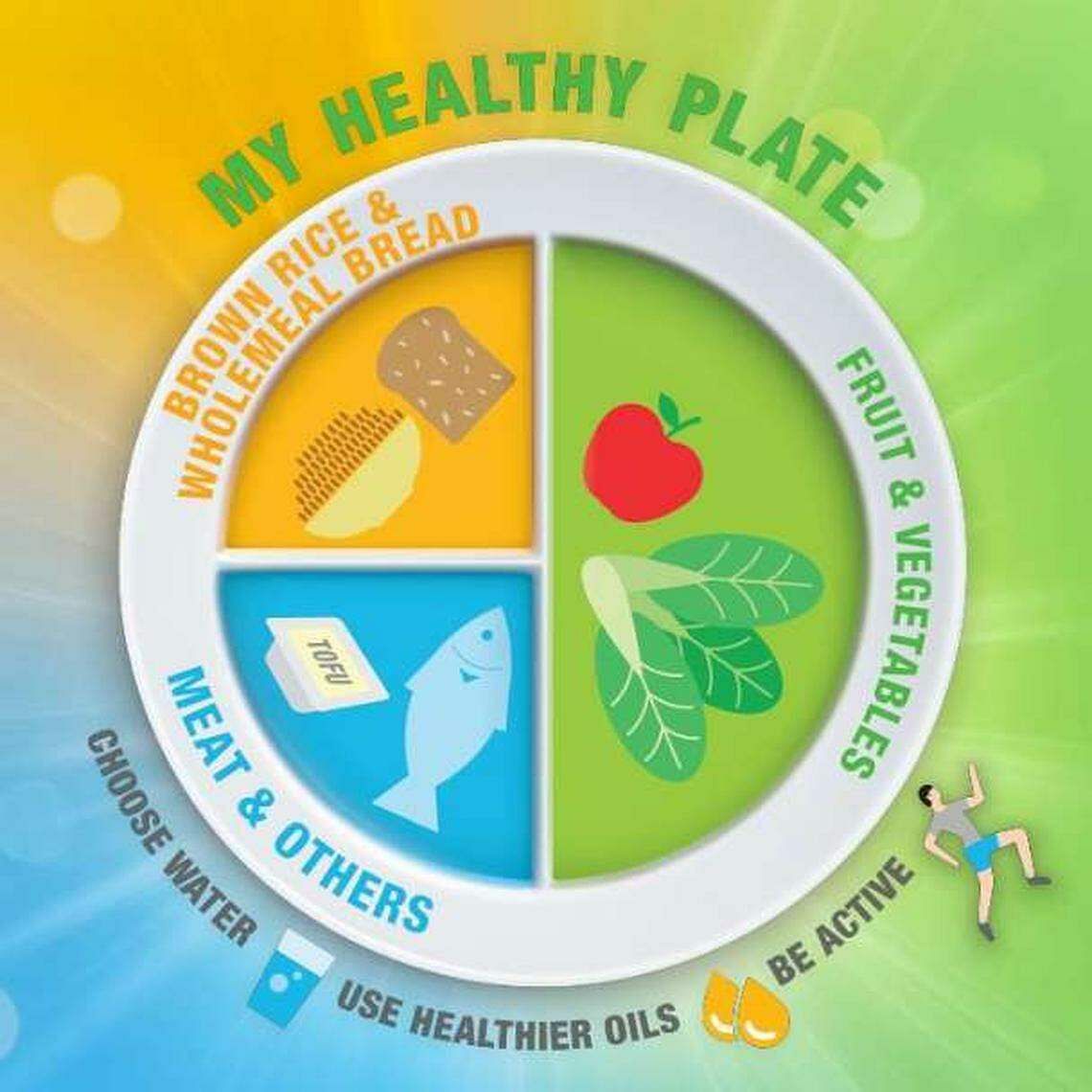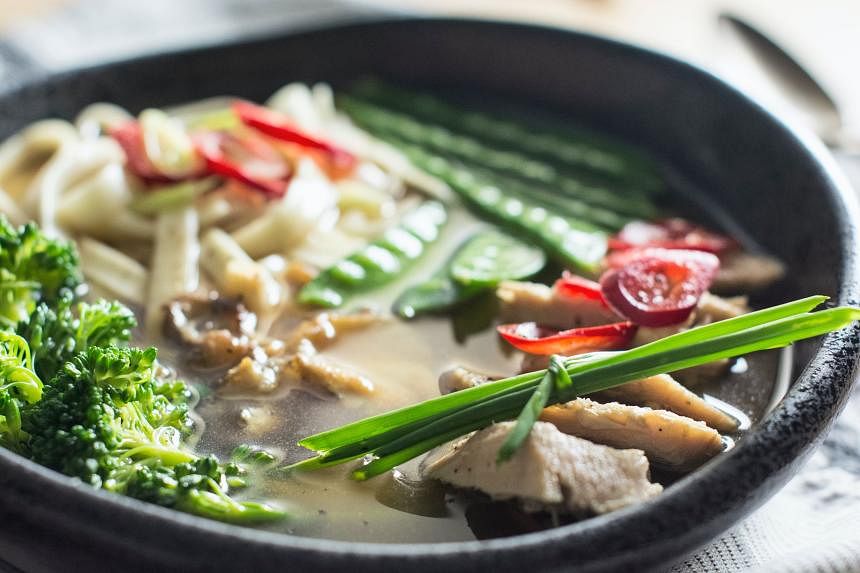SINGAPORE - Accountant Lenette Ho usually pays at least $4 more for her food at the hawker centre because she likes having an extra serving of vegetables with her chicken rice.
Paying a little more for her greens adds up, especially since Ms Ho, 34, goes to hawker centres for meals at least five times a week. That means she pays about $80 more at the hawker centre each month for the extra helping of vegetables.
She said: “I usually eat local dishes like dark carrot cake, chicken rice, laksa and mee goreng. As these dishes do not traditionally get served with a side of vegetables, I pay extra for a healthy serving of greens.”
The dearth of vegetables in a typical Singaporean hawker meal was raised in an Instagram post on Oct 15 by Ms Pamelia Chia, the author of cookbooks Wet Market To Table and Plantasia, which both feature recipes using fruits and vegetables.
In her post, she said: “The utter ridiculousness of vegetable proportions in a typical Singaporean hawker meal. I ordered a bowl of prawn noodles for breakfast and there was only a strand of kangkong in it.”
Speaking to The Straits Times, she said the issue is not just that hawkers offer few dishes with vegetables. Singaporeans also appear to have a distaste for vegetables.
Ms Chia said: “Because of how beloved many hawker dishes are, locals can be resistant to any form of change. Any deviation from how they remember or think of the dish represents ‘inauthenticity’, and that can be met with strong, negative emotions.
“A better solution might be to conceptualise new hawker dishes that are well balanced or to dig into our roots and revive traditional dishes that are inherently vegetable-forward – thunder tea rice, for example.”
The reasons behind the sparse sprinkling of greens in hawker fare are also rooted in history, said hawker Gwyneth Ang, who owns eatery One Prawn Co in MacPherson Road.
Hawker food is rooted in the early days of Singapore’s history, when people who laboured under the sun needed quick, cheap and fast meals that they could wolf down on the hoof.
Hence, the predominance of starchy and fatty food in South-east Asian street fare, said Ms Ang. The addition of vegetables, she added, can elevate the flavour of a dish, and if customers ask for more vegetables in their meals, she welcomes it.
In response to queries, Singapore Nutrition and Dietetics Association dietitian Loh Hui Xin said that including vegetables in meals daily is key to enjoying good health.
She said: “Vegetables are naturally low in energy, fat and sodium. They are a wonderful source of dietary fibre, which may help protect against colorectal cancer because it optimises digestive health, smoothens bowel movement, and prevents constipation.”
She added that vegetables are a rich source of vitamins and minerals, and can reduce blood cholesterol levels and lower the risk of metabolic diseases, including heart disease and stroke.
Recently, on social media platforms such as Reddit and Facebook, discussions have dwelt on how hawker food has little or no vegetables, and how hawkers have been charging high prices for a side helping of greens.
Home baker Ho Weiling, who is in her 40s, said she, too, finds hawker food lacking in greens. She said: “In the meals that I prepare, there will always be a big portion of vegetables. But at the hawker centre, I am unable to find meals that come with a big serving of vegetables unless I ask for it, and pay extra.
“If I am dining with my three children and husband, we will have to cough up between $10 and $15 more for vegetables. That is too expensive.”
Mr Jason Chua, founder of casual eatery Beng Who Cooks in Upper Changi, said vegetables are pricier compared with meat, and have a shorter shelf life and lower yield.
Mr Melvin Chew, a second-generation hawker at Jin Ji Teochew Braised Duck and Kway Chap in Chinatown Complex, said there has been a spike in the price of vegetables from Malaysia and China due to floods and other supply issues.
“Recently, I noticed more people asking for more vegetables. Most requests are for bean sprouts in duck noodles,” he said.
Mr Chew, 45, added that when customers ask for more vegetables, he does not charge for it.
Responding to queries, a Health Promotion Board (HPB) spokesman said hawkers have been encouraged to offer healthier options under the voluntary Healthier Dining Programme.
About 60 per cent of stalls across all hawker centres and coffee shops now offer at least one healthier option.

The spokesman added that diners can look out for stalls with labels that indicate that lower sodium options or food lower in calories are available at the stall. Stalls at hawker centres and coffee shops can also indicate that they use healthier oil or serve wholegrain options.
He said HPB encourages consumers to be conscious about the dining choices they make and ensure they have a balanced diet.
The HPB guideline My Healthy Plate shows how a balanced diet can include all the four food groups in the right proportions – a quarter plate of wholegrains, a quarter plate with good sources of protein, and half a plate with fruits and vegetables.


